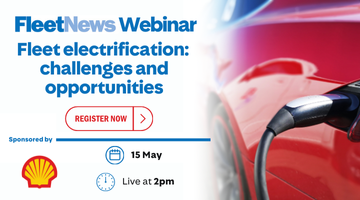Frustration mounts as roads get worse
I endorse Andy MacDonald’s views on the letters page “Driving standards at an all-time low” (Fleet News, July 5), regards driving in the UK compared with mainland Europe and the United States.
Delays seem to be engineered here thanks to thousands of cones used at some distance prior to roadworks and unrealistically low, 24-hour speed limits through roadworks, even when no works are taking place. There are also massive delays after road accidents to enable data collection.
In the US, signage on the interstates encourages people to clear the affected lanes after fender benders so traffic flows. In addition trucks are not artificially governed and do not cause delays when overtaking, speed limits through road works are reduced, but by smaller margins, and there are higher fines for speeders.
But the major difference is the high visibility of police/highway patrol/state trooper vehicles. And they do pull vehicles over, even for a failed light bulb, which seems to engender more respect for traffic laws.
Many major roads in the United States and mainland Europe are two lane dual carriageways, but, unlike the UK, few drivers dawdle and traffic flows more smoothly.
I wonder whether UK driving standards are made worse by the lack of a visible police presence. We should have police who operate a pro-active policy rather than a force that just seems to appear after an incident.
MALCOLM ANDREWS, Director, Leavesley Containers
Truckers are worst drivers on the road
With regards to Andy MacDonald’s letter “Driving standards at an all-time low” (Fleet News, July 5) – he must be wearing rose-tinted spectacles.
Eating, drinking, reading maps and talking on their non-hands-free mobiles are all examples of truckers’ exemplary driving standards. I think not.
Marcel Cooper, “Speed governors must be accurate” (Fleet News, July 5) only cites two lorries abreast for miles. He should try the M60 near Manchester where they travel three abreast on the four-lane sections. No small wonder it is congested.
Truckers are without doubt the worst drivers on the road.
DAVE WOOD, Protec Fire detection
Let the train take the freight strain
Ian Coleman’s defence of lorry drivers in respect of the delays they cause on dual carriageways calls for us to have a thought for thm – “Don’t blame lorries for traffic hold-ups” (Fleet News, June 28).
He cites bad car driving as the major reason for hold-ups. I don’t know where he has regularly witnessed this, but it’s certainly not on this planet.
Every day I see lorries overtaking each other at one or two miles per hour faster – a manoeuvre which can take many miles to complete. The lorry drivers making this slow overtaking manoeuvre save about 90 seconds over 100 miles travelled.
A car driver attempting to drive at 70mph is delayed by a good 20 minutes over the same distance.
In light of this, it would seem there is little thought from the lorry drivers for other road users. The real answer to the problem is to ban all speed-governed lorries from the road and send the goods as rail freight, using smaller, unrestricted wagons to make shorter deliveries to and from the railhead. The benefits of this approach would be numerous:
NEIL MCVEIGH, Galliford Try Water & Rail
In support of the beleaguered trucker
I have read the responses to my letter “Don’t blame lorries for traffic hold-ups” (Fleet News, June 28) and still think that Mr Cooper and Mr Taylor are missing the point.
First of all, Mr Cooper has to realise there is no need to ban speed limiters, they just need to be set so that lorries can safely pass another vehicle without holding up traffic.
Secondly, Mr Taylor needs to get his facts right before blaming lorries for the poor roads we all drive on. The grooves are not caused by overloaded lorries but by poor quality road repairs and sub-standard materials used. There is a system used by VOSA called WHIM which stands for weight in motion. The system uses sensors set into the road surface and then further up the road will be a VOSA enforcement officer watching a screen.
If a vehicle is overweight the officer will know and will pull the vehicle over as it approaches the checkpoint. The other part of Mr Taylor’s question is just pie in the sky. The infrastructure is not in place as most railway lines have been pulled up. A system of piggy backing vehicles over long distances has been tried but was found to be too expensive.
IAN COLEMAN, Transport manager, Arri Lighting Rental
Hire standards required
I read with interest the helpline “Contract Hire” (Fleet News, July 5) regarding charges levied at the end of a contract for damage caused to vehicles.
Although we belong to the BVRLA we do not subscribe to its view on what is fair wear and tear. In our experience, its view fails to take into account that vehicles, when returned off hire, have been in the hands of customers for anything up to five years.
While you can expect a car to be returned after two or three years in good condition, to say that it should be in showroom condition seems absolutely absurd.
The real answer to your reader’s problem is to stop using the major players in the contract hire and leasing industry. The more satisfactory option is to use their local independent vehicle hire companies. Companies such as these are much more attuned to the realities of contract hire and use their common sense.
R H COLE, Chairman, Bury Van Hire















Login to comment
Comments
No comments have been made yet.